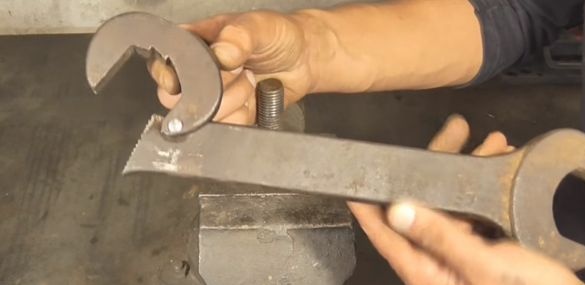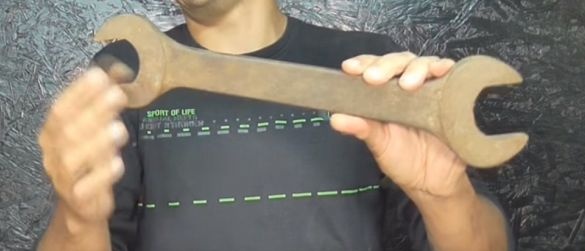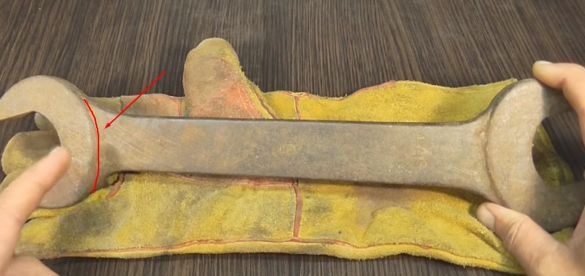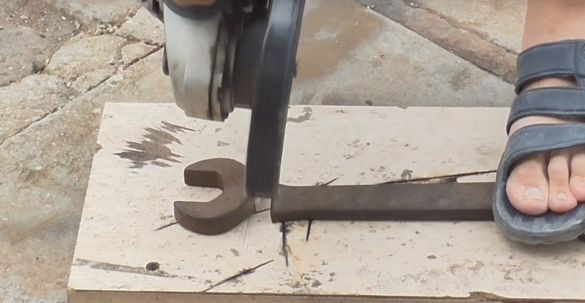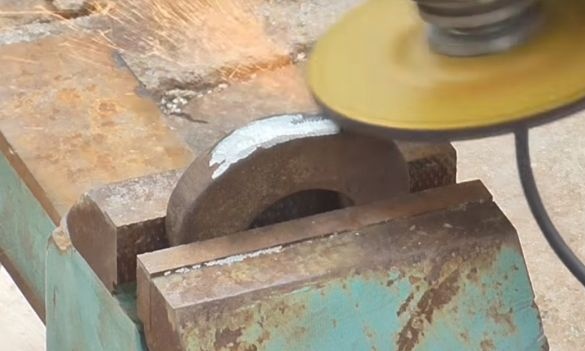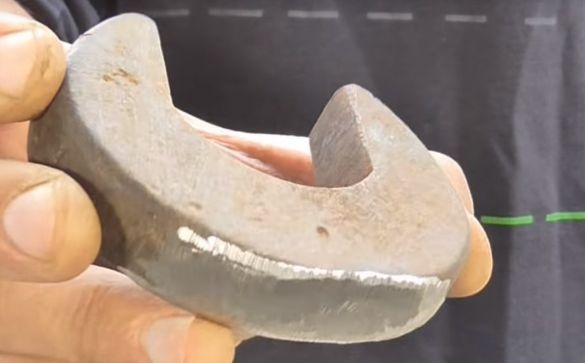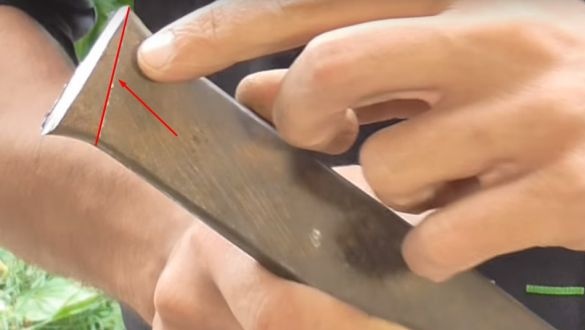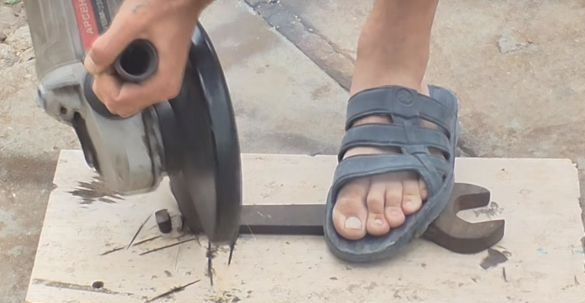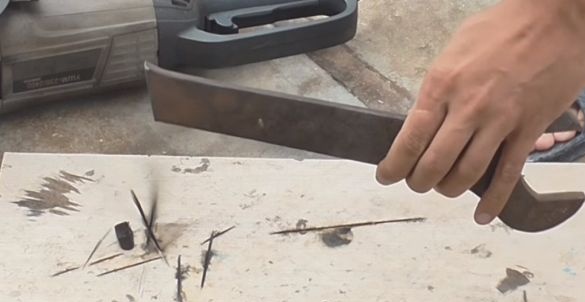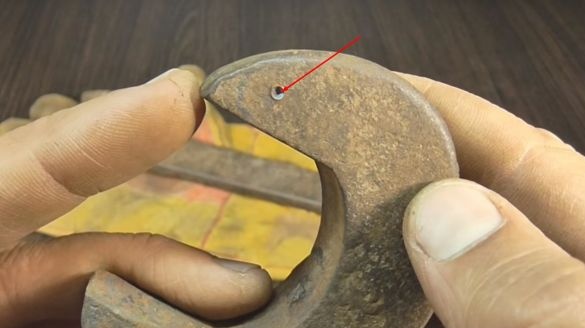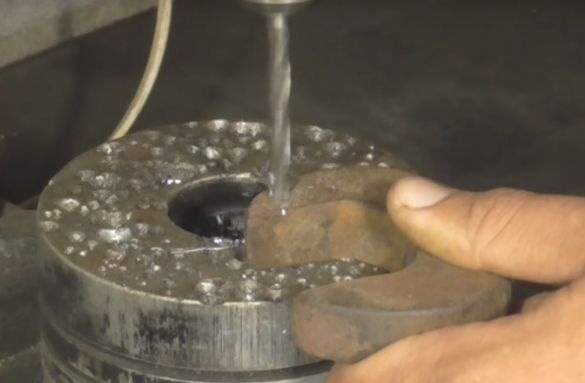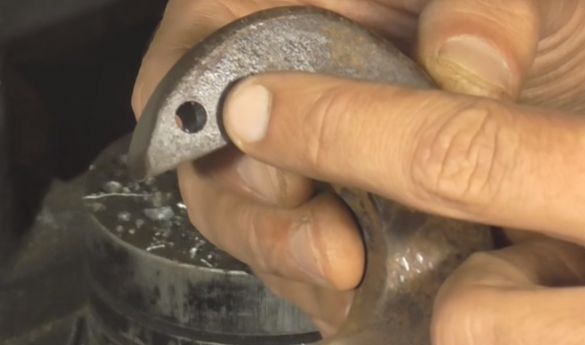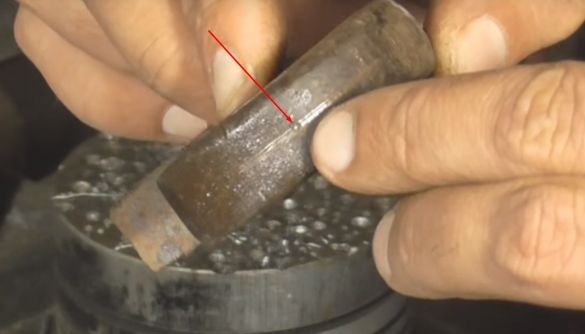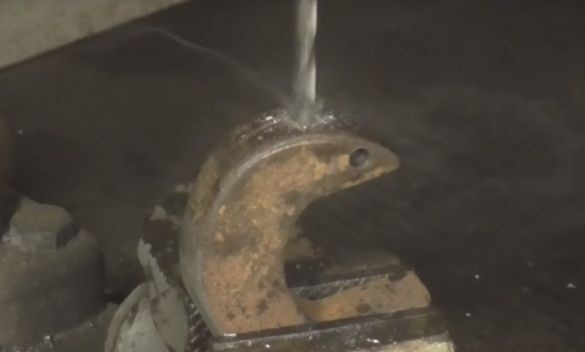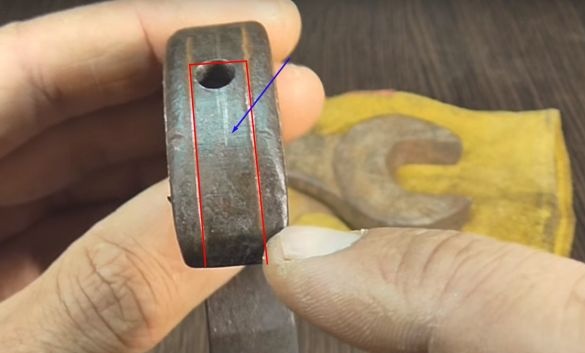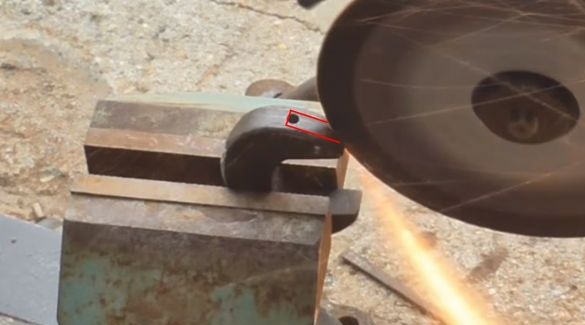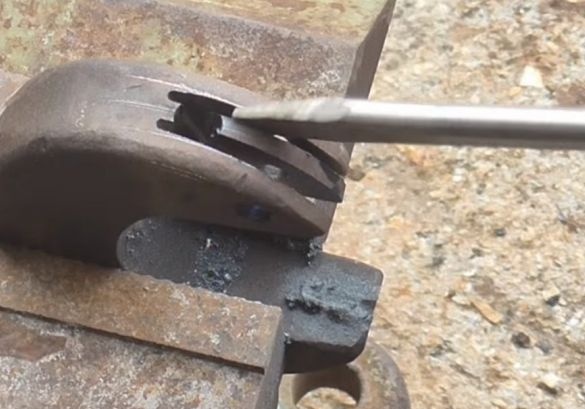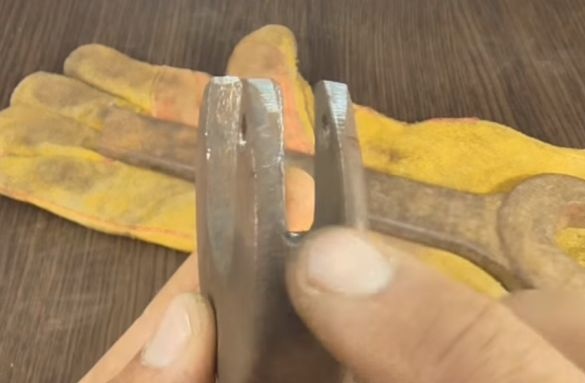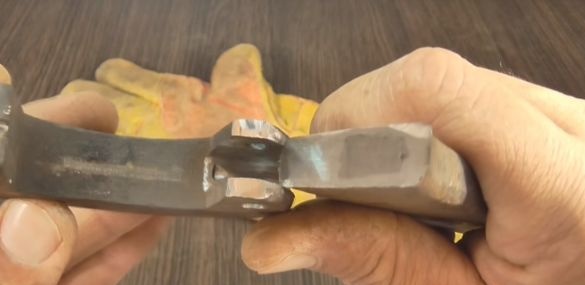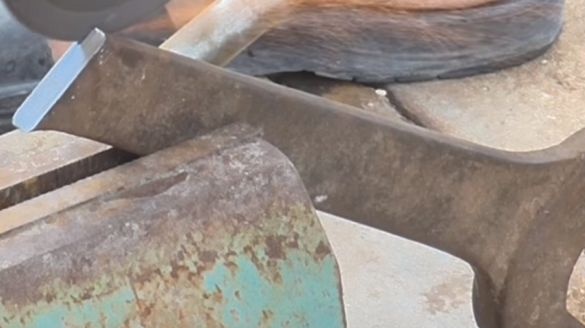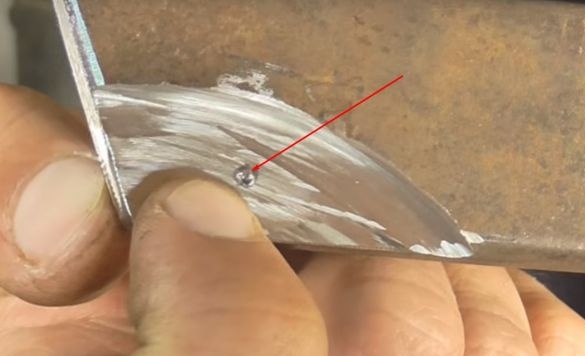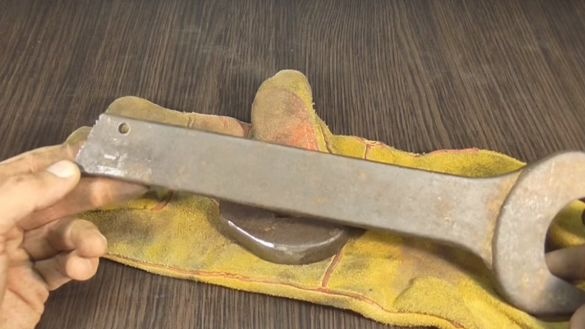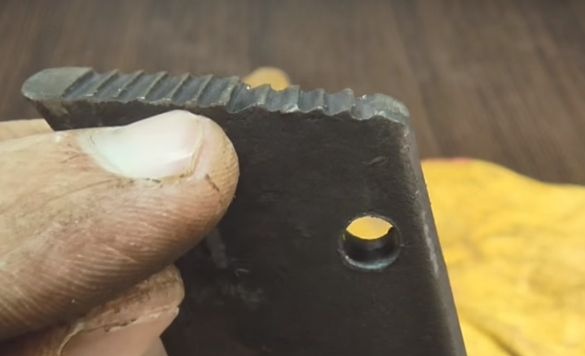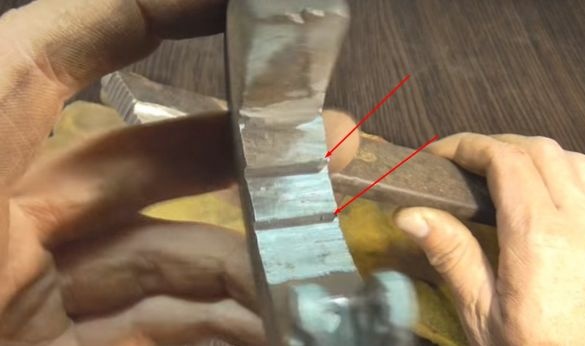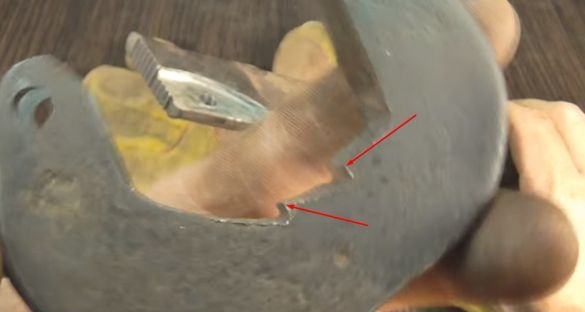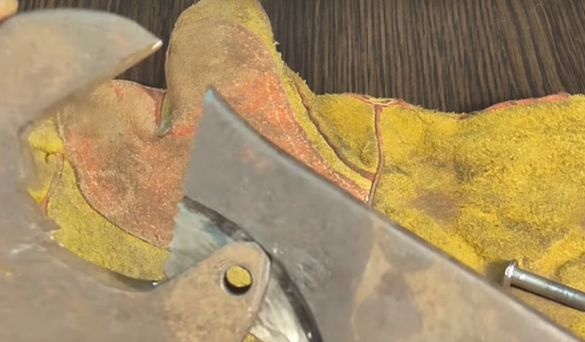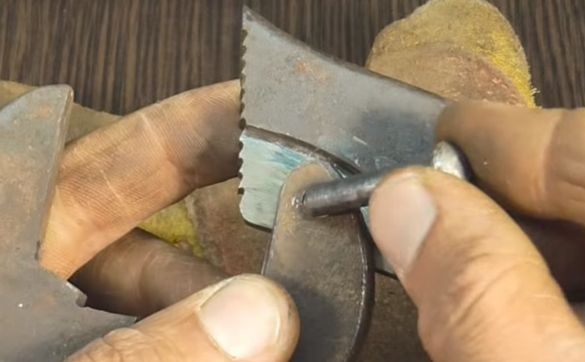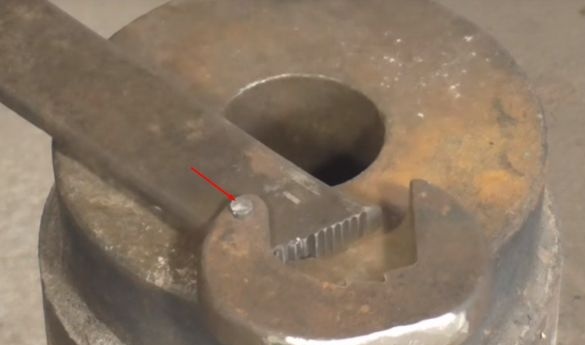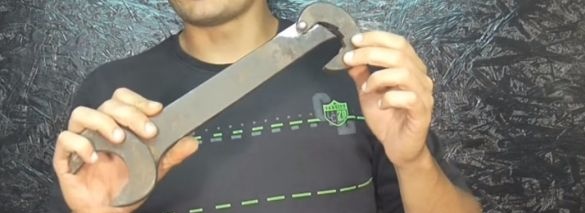To make such a wrench, the author took a regular large size wrench.
And he began to manufacture it. The author cut the key using angle grinder, as shown in the picture.
Then he clamped his horn part into yews and brought it to perfection with a grinding wheel.
Then he took the second piece of the key and made a saw cut at a small angle.
In the carob part on one side
and made a hole.
Then he screwed it up for another hole, only from the end.
Then again (using angle grinder) made a cut at the end.
The second hole made by the author, only for more convenient extraction of an unnecessary piece of metal,
after he removed the extra piece, he sharpened the slot itself well.
Then the author took the hilt, and sharpened it a little so that it entered the slot on the horn.
Further at the place of turning turned
and made a hole.
Also on the handle and on the horn, the author made a notch for better coupling of the key with parts.
Further, the author inserted the handle into the slot on the carob and fastened both parts with a metal rivet.
This is the universal key obtained by the author. According to the author, such a key can be unscrewed or vice versa to tighten not only nuts, but also round parts such as a pipe.
We look in a video format:

